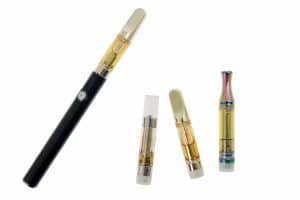In recent years, the cannabis and hemp industries have experienced a significant transformation, largely driven by advancements in distillation technology. As consumers and regulators alike demand higher quality and more consistent products, the shift towards sophisticated distillation methods has become increasingly apparent. How exactly is distillation technology revolutionizing these industries, and what does the future hold?
Sections
ToggleSection 1: Understanding Distillation Technology
Distillation is a purification process that separates components in a mixture based on their differing boiling points. In the context of cannabis and hemp, distillation is crucial for isolating cannabinoids, the compounds responsible for the plants’ therapeutic effects.
There are several types of distillation techniques employed in the industry, including:
Wiped Film Distillation: Utilizes a thin film of oil on a heated surface, which allows for precise temperature control and efficient cannabinoid separation.
Falling Film Distillation: Similar to wiped film, but the oil flows down a vertical surface, promoting faster processing times.
Rotary Evaporation: Uses rotating flasks to increase the surface area for evaporation, commonly used for solvent recovery in cannabis processing.
Each method has its unique advantages, but all aim to enhance the purity and potency of the final product by isolating desired cannabinoids while removing unwanted impurities.
Section 2: The Advancements in Distillation Equipment
The market has seen a surge in advanced distillation equipment, with the VK series from Root Sciences standing out as a prime example. These machines represent a leap forward in terms of efficiency and quality control.
Enhanced Efficiency: The latest distillation equipment boasts higher throughput, allowing producers to process larger quantities of cannabis and hemp within shorter periods. This results in increased yield per shift, maximizing productivity.
Superior Quality: Advanced distillation units are designed to maintain the integrity of cannabinoids, producing extracts with higher purity and potency. This is critical for meeting stringent quality standards and consumer expectations.
For instance, the VK 100-5 from Root Sciences can process up to 5 liters of distillate per hour, significantly boosting operational capacity and ensuring consistent product quality.
Section 3: Impact on Product Quality and Variety
Distillation technology has a profound impact on the quality and variety of cannabis and hemp products available on the market. By enhancing purity and potency, distillation ensures that consumers receive products with reliable and consistent effects.
Product Purity: Advanced distillation methods effectively remove contaminants and unwanted compounds, resulting in cleaner and safer products
Product Variety: With precise cannabinoid isolation, manufacturers can create a diverse range of products tailored to specific medical and recreational needs. This includes full-spectrum extracts, THC-free CBD products, and custom cannabinoid profiles for targeted therapeutic applications.
The ability to offer such a wide variety of high-quality products caters to the diverse preferences of consumers, driving market growth and innovation.
Section 4: Economic and Environmental Considerations
While the initial investment in advanced distillation equipment can be significant, the long-term economic benefits are substantial.
Cost Efficiency: Higher throughput and yield per shift reduce operational costs, making production more economical over time. This efficiency can translate into lower prices for consumers and higher profit margins for producers.
Sustainability: Modern distillation technology also addresses environmental concerns. Efficient energy use and reduced waste generation are key advantages. Some systems are designed to recycle solvents, minimizing environmental impact and promoting more sustainable practices.
These economic and environmental benefits position advanced distillation technology as a smart investment for forward-thinking cannabis and hemp businesses.
Section 5: Regulatory and Safety Issues
Navigating the regulatory landscape is a significant challenge for the cannabis and hemp industries. Distillation technology plays a crucial role in ensuring compliance with safety and quality standards.
Regulatory Compliance: Advanced distillation systems are engineered to meet stringent regulatory requirements, ensuring that products are safe and consistent.
Safety Measures: Safety in the distillation process is paramount. Modern equipment includes features such as automated controls, pressure monitoring, and emergency shutdown systems to protect operators and maintain product integrity.
By adhering to regulatory standards and implementing robust safety measures, companies can mitigate risks and build trust with consumers and regulators alike.
Section 6: Future Trends and Predictions
The future of distillation technology in the cannabis and hemp industries looks promising, with continuous innovations on the horizon.
Technological Advancements: Future developments may include more automated systems, improved energy efficiency, and enhanced precision in cannabinoid isolation.
Market Evolution: As technology evolves, the market will likely see an even greater emphasis on product customization and quality. Innovations in distillation could lead to new product categories and applications, further expanding the industry’s reach.
Staying abreast of these trends will be crucial for businesses aiming to maintain a competitive edge and meet the evolving demands of the market.




